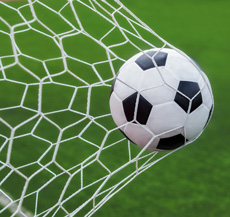One of the world’s most popular global sporting events began earlier this summer. On June 14th the 2018 World Cup kicked off in Russia with much fanfare and anticipation. The World Cup is so popular, it’s been reported that in 2014 more than a billion television viewers worldwide watched Germany’s 1-0 win over Argentina in extra time at the Maracana Stadium in Rio de Janeiro.
For the uninitiated the World Cup begins with 32 national soccer teams competing for the cup. Like the Olympics, the World Cup is held every four years and alternates among different host nations across the globe. And despite having a niche appeal in the U.S., “futbol” is widely regarded as the world’s most popular sport.
So how do we know who will survive and who will triumph in the World Cup? It’s very hard to tell. World-class soccer teams, while seemingly playing the same game, have unique playing styles that define their respective teams (and their fans as well).
For example, in Brazil the national team plays a style often referred to as “ginga,” which is a combination of rhythmic, fluid movements that, coincidentally (or oddly?), resembles the Samba. When you watch the Brazilian team play, you’ll see a game of quick dance-like moves, efficient passing, and panache. This is why they call the Brazilian game, “joga bonito,” a Portuguese term that roughly translates to mean “play beautifully.”
On the other hand, if you watch the Italian national team, you’ll notice that they play with staunch defense and not even a slight hint of the Samba. These professionals are well-known for their sudden and aggressive counter-attacking schemes that can catch their opponents flat-footed.
Brazil and Italy have won more than half of the World Cups played, even though their respective styles of play vastly differ. These two very different styles have been extremely successful, which illustrates that there is more than one “correct solution” to the burning question of how to win a world title.
Investing Like Soccer
In investing — much like in soccer — employing a consistent and sound strategy often leads to success over time. Granted, there’s not one single investment approach that suits the temperament of all investors, but many strategies that can be “correct” if used appropriately. Relative Strength (using Point-and-Figure methodology) is the style of play that works best for me.
One reason I have faith in relative strength is the simple fact that it gives me the ability to objectively rank varying assets. It doesn’t matter if I’m reviewing a stock, mutual fund or commodity. As long as I have a price, I can compare it against another price. I’m then able to replicate this process by comparing factors from a larger universe against one another, to subsequently rank them from strongest to weakest.
This same “rankings” approach can be found almost everywhere in the sports world, particularly in soccer. The Fédération Internationale de Football Association (FIFA) compiles its FIFA/Coca-Cola World Rankings to rank the best national soccer teams. By looking at past performance of the different teams, they are able to objectively rank the national teams from strongest to weakest with the belief that those teams at the top will most likely continue to perform consistently better than the teams at the bottom.
If you’ve been reading my articles you may think that this sounds a little familiar. And you’d be right.
My investment methodology operates in a very similar way, comparing different assets against each other, then ranking them from the strongest to weakest. The top-ranked assets often demonstrate trends of outperformance. And since I know that these trends tend to sustain themselves for extended periods of time, I look to these leaders to remain competitive until proven otherwise. As you’re aware from reading my articles, past performance cannot guarantee future results, since there is no way to know how long any trend will last. But I’ve determined that trends have a tendency to continue in the same direction for an extended period of time, and as a result, I look to these leaders to remain competitive until proven otherwise.
So based on all of these assumptions — and in great anticipation of the World Cup — one should expect to find Germany, Brazil, Belgium and Portugal making a strong push toward the finals, while Tunisia, Panama and Australia may expect to be watching the competition from the stands or the comfort of their own homes.
MANA welcomes your comments on this article. Write to us at [email protected].



